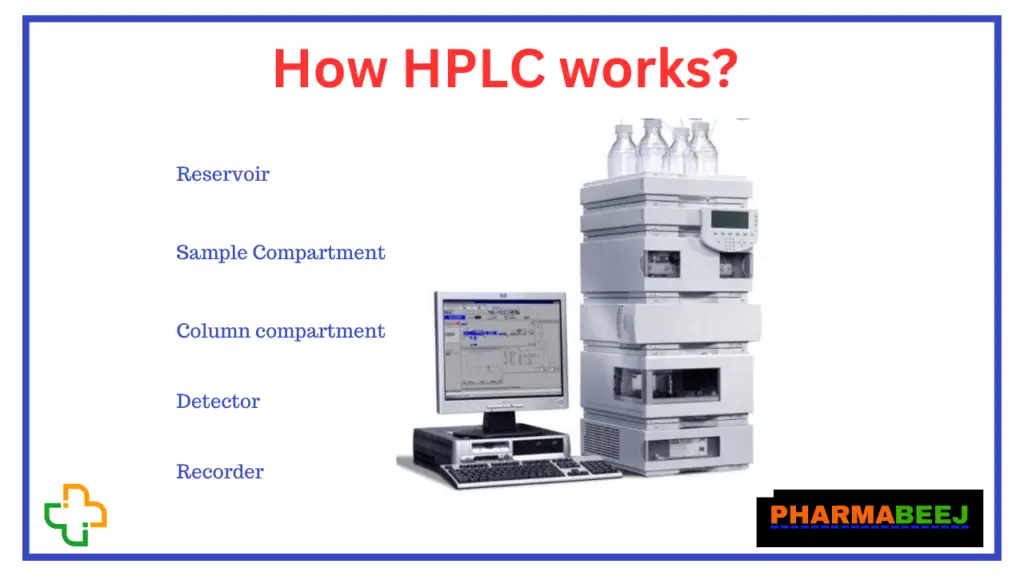How HPLC works in Pharma?
High-Performance Liquid Chromatography (HPLC) is an analytical method used for separating, identifying, and quantifying components within a mixture. This technique relies on chromatography principles, involving the separation of a mixture into its individual components based on their interactions with a stationary phase and a mobile phase.
Here’s an overview of how HPLC works:
- Sample Preparation: The sample to be analyzed is dissolved in a liquid solvent to form a sample solution, which is then introduced into the HPLC system through an autosampler.
- HPLC System Components: The key components of an HPLC system include: A) Pump: This is responsible for delivering the mobile phase (solvent) at a consistent flow rate, ensuring accuracy and reproducibility. B) Injector (Autosampler): The injector introduces the sample into the mobile phase stream, directing it onto the chromatographic column. C) Chromatographic Column: The heart of the HPLC system, the column contains the stationary phase – a specialized material that interacts differently with the sample components based on their physicochemical properties. D) Detector: The detector monitors the eluting components from the column, measuring their concentration. Common detectors used in HPLC include UV-Vis absorbance, fluorescence, and mass spectrometers. E) Data Collection and Analysis: A computer system collects data from the detector and analyzes the chromatograms to identify and quantify the sample components.
- The Chromatographic Process: The sample is injected onto the column while the mobile phase is continuously pumped through it. During this process, the sample components interact with the stationary phase and separate based on their affinity for the stationary and mobile phases. A) Retention Time: Each component spends a different amount of time in the column (retention time) based on its interaction with the stationary phase. Components with stronger interactions take longer to elute from the column. B) Elution: As the sample components move through the column, they are eluted at different times. The eluent (mobile phase with the sample components) then passes through the detector. C) Peak Separation: The detector records the signal from each eluted component, and this data is represented as peaks on the chromatogram. Each peak corresponds to a specific compound in the mixture.
- Data Interpretation: Scientists analyze the chromatogram to determine the identity and concentration of the different components in the sample based on their retention times and peak areas.
HPLC finds widespread use in various fields, such as pharmaceuticals, environmental analysis, food and beverage testing, and other areas where precise separation and quantification of components in complex mixtures are essential.

Also Read:
31 most important interview questions and answers on dissolution
Top 31 Interview questions for quality control analyst in pharma
25+ HPLC chromatographic terminologies used in pharmaceuticals
20+HPLC Interview Questions and answers in pharma
Refer YT channel: Pharmabeejpro